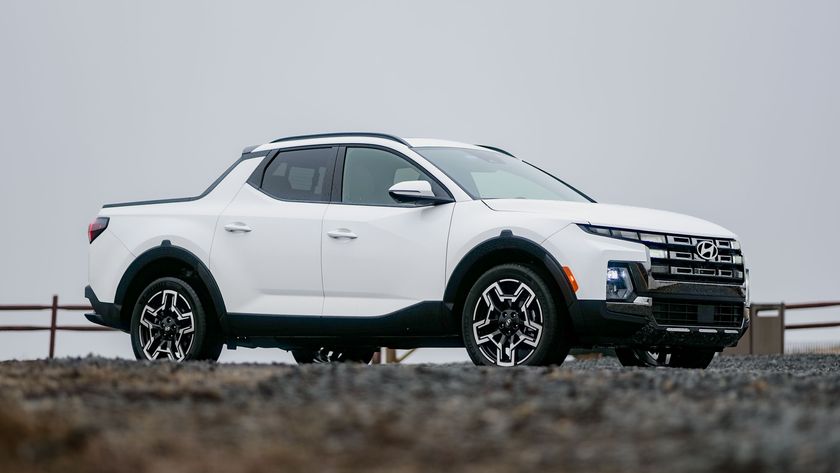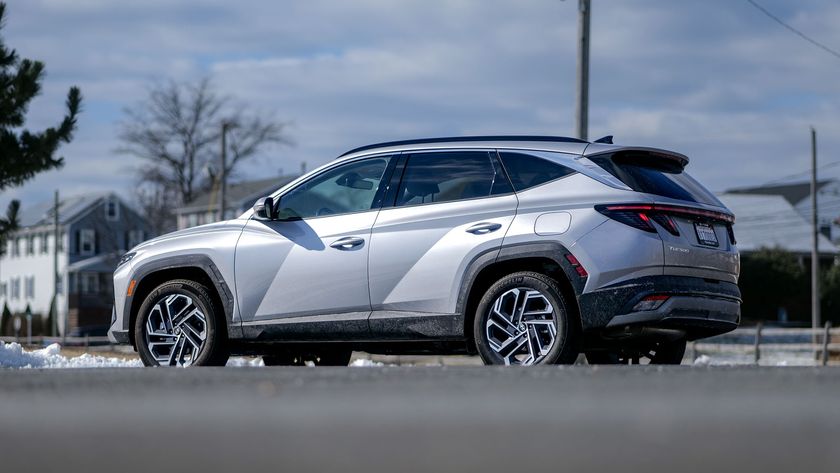
Charging an electric vehicle sounds simple in theory, right? Park up, plug in and recharge your battery. Job done. The reality is a little bit different, as anyone who owns or has driven an EV will doubtless agree. It’s certainly not quite as straightforward as pulling into a gas station and filling up, which can all happen within the space of a few minutes.
This is because electric vehicle charging is still evolving. Our gas and diesel refuelling infrastructure has been around for years and much of the basic setup hasn’t changed all that much. Pumps are slightly more advanced than they used to be and paying for your gas is certainly more straightforward. Then again it's possible to recharge an EV for free, despite some recent opposition to that concept.
But the basic principle remains unchanged. Charging an EV on the other hand can sometimes feel like a step backwards.
EV chargers are not all equal
Part of this is down to the different ways in which electric vehicles get charged. Depending on the model of car you’ve got, the port used to plug in and recharge varies. It’s a bit like the different plug sockets you get around the globe.
Read next: How to find EV charging stations.
Thankfully, anyone heading off on vacation simply needs to pack a multi-headed travel plug, which allows them to plug in and charge their phone, shaver or hairdryer using a plug that suits the socket. Unfortunately, it’s not possible to do this with an electric vehicle.
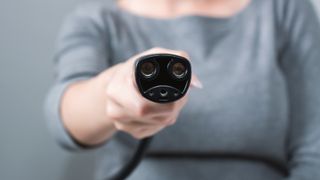
Tesla has done a great job in developing its own proprietary system, which lets you quickly and easily access the arguably superior Supercharger network. These Superchargers can be found across the US, Europe and many other parts of the world, with over 30,000 individual chargers and counting.
The rapidly expanding network is also supplemented by Tesla’s Destination Chargers, found in hotel parking lots and other popular tourist locations. These are slow, but use the same plug and socket mechanism as the rapid-power Superchargers.
You have to know when to level-up
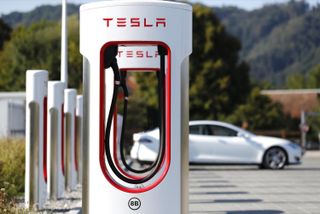
Following behind is everyone else. EV ports and the chargers that connect to Non-Tesla vehicles come in several variants across the U.S. You also get different levels of charging: Level 1, Level 2 and Level 3. The higher the number, the more powerful (and faster) the charging should be.
Which one you can use depends on the type of EV you want to charge and its ability to accept the power supply. The good news on that front is the car will be able to figure this out for you, so you won’t inadvertently fry your battery when you plug in.
Level 1
Level 1, 120 Volt AC charging is the ‘entry-level’ option, and much slower as a result. The bonus is if you don’t mind adding a miserly 3 to 5 miles of range per hour is that it allows you to plug in and charge at home without having to install any specialist charging equipment. Overnight makes the most sense and lets you avoid the public charger scenario altogether.
Level 2
Level 2, which is 208 Volts to 240 Volts AC, is speedier and your options are greater, although there are still limitations. You might get up to 80 miles from an hour’s charge, though this could drop down to just over 10 in other cases. EV chargers that offer Level 2 charging are becoming more commonplace, however, and can often be the ones to look for at locations like fast food outlets, shopping mall complexes and hotels.
Level 3
Level 3 DC rapid charging is the most appealing in terms of speed and efficiency. The 400 Volts to 900 Volts DC rapid charge and Supercharging options can deliver up to 20 miles per minute thanks to that direct current supply and higher voltage rating. Tesla owners get to enjoy this via the Supercharger network, while other makes and models don’t always get that luxury.
If you don’t have a Tesla but want to be up there with the big boys, then Level 3 charging is the one to head for — provided it’s available where you are, or where you’re headed.
Different chargers have different plugs
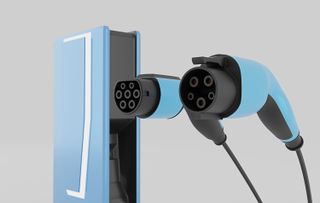
In terms of the plugging-in part of the charging process, in North America the connectors are standardized for both Level 1 and Level 2 charging using a so-called ‘J-Plug’. This plug is also known as Type 1, with the alternate Type 2 charger being used in Europe and other parts of the world.
Level 3 comes with a trio of standardized connection options. While Tesla has its own proprietary thing going on, the majority of other auto manufacturers currently use the Combined Charging System, or CCS, which is a combination style plug. The CCS charging standard shares the same J Plug as Level 1 and Level 2 chargers, but also includes two additional DC pins at the base to support higher electrical current.
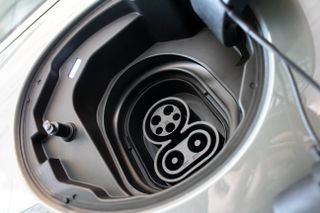
Meanwhile certain automakers, particularly Japanese automakers like Nissan and Mitsubishi, have been using the CHAdeMO charging system. This utilizes a totally separate plug and socket combination than the slower AC charging, and has slowly been supplanted by CCS in North America and Europe.
The only recent car you’re likely to come across with a CHAdeMO charging is the Nissan Leaf. However since the Nissan Ariya is set to launch with a CCS charger, it looks like CHAdeMO's days are numbered.
Finding a charger is a cinch

The easiest part of the EV charging procedure is locating a compatible unit that can replenish your battery. Like everything else, there’s an app for that.
In fact, there are numerous apps that can help you find a suitable charger, check its compatibility with your vehicle, tell you the availability and detail plus any costs involved. Each charging network has its own app that can guide you, while there are plenty of other options, like PlugShare or EVGo, that offer better support for multiple networks.
Alternatively, Google Maps has tools to help you search for nearby chargers, while your EV should have built-in features — often as part of the infotainment system — that can point your vehicle in the right direction. In some cases, if you use the built-in navigation system, the EV will automatically route you to a charging station if you’re likely to run out of power mid-trip.
Of course, what you find when you arrive at the location of the charger doesn’t always match that of the description you’ve been getting during the journey. When it works, using tech to find a suitable charger is one of the easiest ways to charge an EV. When it doesn’t, well, you could find you’re greeted by an incompatible charger though more likely it won’t work as expected. It might be in use or, annoyingly, blocked by another non-electric vehicle.
Worst of all though, it might not be working at all. That’s why EV ownership, or rental for that matter, involves a little more thought and, ideally, a plan of action. Short hops around town are no biggie as you should be able to find at least one location where you can top up as needed.
Longer journeys, or beefy road trips, require careful planning using an app and any available in-car tech so you do at least have a fallback charging option if the location of choice is out of commission.
Which chargers are best?
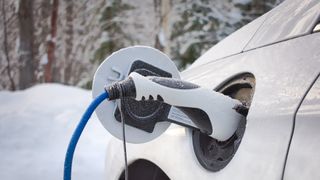
It’s not so much which charger is best, as much as what will be compatible with your EV. The best thing about charging connectors and their respective ports is that they only fit if they’re compatible with each other.
If you’re new to charging, or just in a state of minor panic due to a battery that’s nearly empty, it can be easy to overlook this point. However, a deep breath and quick examination of the connector head and port is all that’s needed to check one will mate happily with the other.
Assuming you’ve got that figured out, the next thing is the speed factor. Chargers are, generally speaking, getting faster and more efficient. However, there are factors that can slow things down, such as the electricity infrastructure where you’re charging along, the number of other vehicles being charged in close proximity, your current battery level and the car itself.
In fact, all sorts of dull, contributory factors can slow a charge. And, as if that isn’t bad enough, cold conditions will help to slow down any charge being added to your battery. Tedious, huh?
EV charging has an exciting future
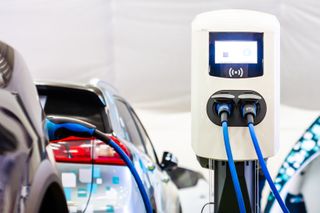
If you’re already a fan of wireless charging your smartphone you’ll be glad to hear that you might be able to rejuice your EV in the not-too-distant future using the same technology.
This inductive charging process is still in its infancy though, with the likes of BMW and Genesis working on how best to make it a practical solution for EV owners. Not having any cables to plug in or charging ports to fathom sounds like a brilliant idea to us.
In the meantime, however, you’ll just need to familiarize yourself with your EV’s port and charging compatibility, plug in and put up with the time you’ll need to pass while the thing recharges.
In many cases, electric vehicle chargers are getting higher powered and faster as a result, although this depends on many factors such as the location, the infrastructure of the area you’re in and, of course, the vehicle’s ability to accept the right amount of charge.
Things are getting better and EV chargers are becoming more commonplace, but we’re a long way off gas station convenience levels yet. At least some of the better EV charging locations are situated in places you want to be, such as the parking lot of your local shopping mall, so you can go and enjoy some retail therapy or grab a bite to eat while you wait for the battery to be rejuvenated.
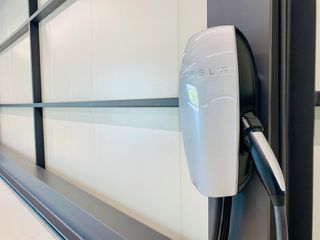
Alternatively, investigate the home charging options available where you live. There are plenty of domestic EV charging solutions, but these are only as good as the power source you have available in your locality. You may well be able to install a Level 2 home charger without too much hassle, but you’ll want to consult an electrical expert to ensure that’s going to be possible.
Unlike filling up with good old gasoline, the situation is not quite as black and white as it could be. But charging at home does mean you won’t spend a small fortune over time on needless tat, unwanted purchases and fast food while you wait for a public charger to get the job done.
Then there’s the whole issue of how much charging will cost you, which is another thing altogether. Most likely your home energy plan will charge you less on a kWh by kWh basis than a charging station, but it pays to double check.
The quick and easy route to take on this front brings us back to the humble app. Pick the right one and prices should be updated dynamically. That should allow you a quick reference check on how your next charge is gonna look when it comes time to pay the bills.
Sign up to get the BEST of Tom's Guide direct to your inbox.
Get instant access to breaking news, the hottest reviews, great deals and helpful tips.

Rob is a London-based freelance tech journalist covering EVs and car tech for Tom's Guide. He has worked at Microsoft and written for numerous tech sites including TechRadar, Gizmodo, ShortList and Fit&Well. When he's not working, he can usually be found out and about on one of his numerous ebikes.
